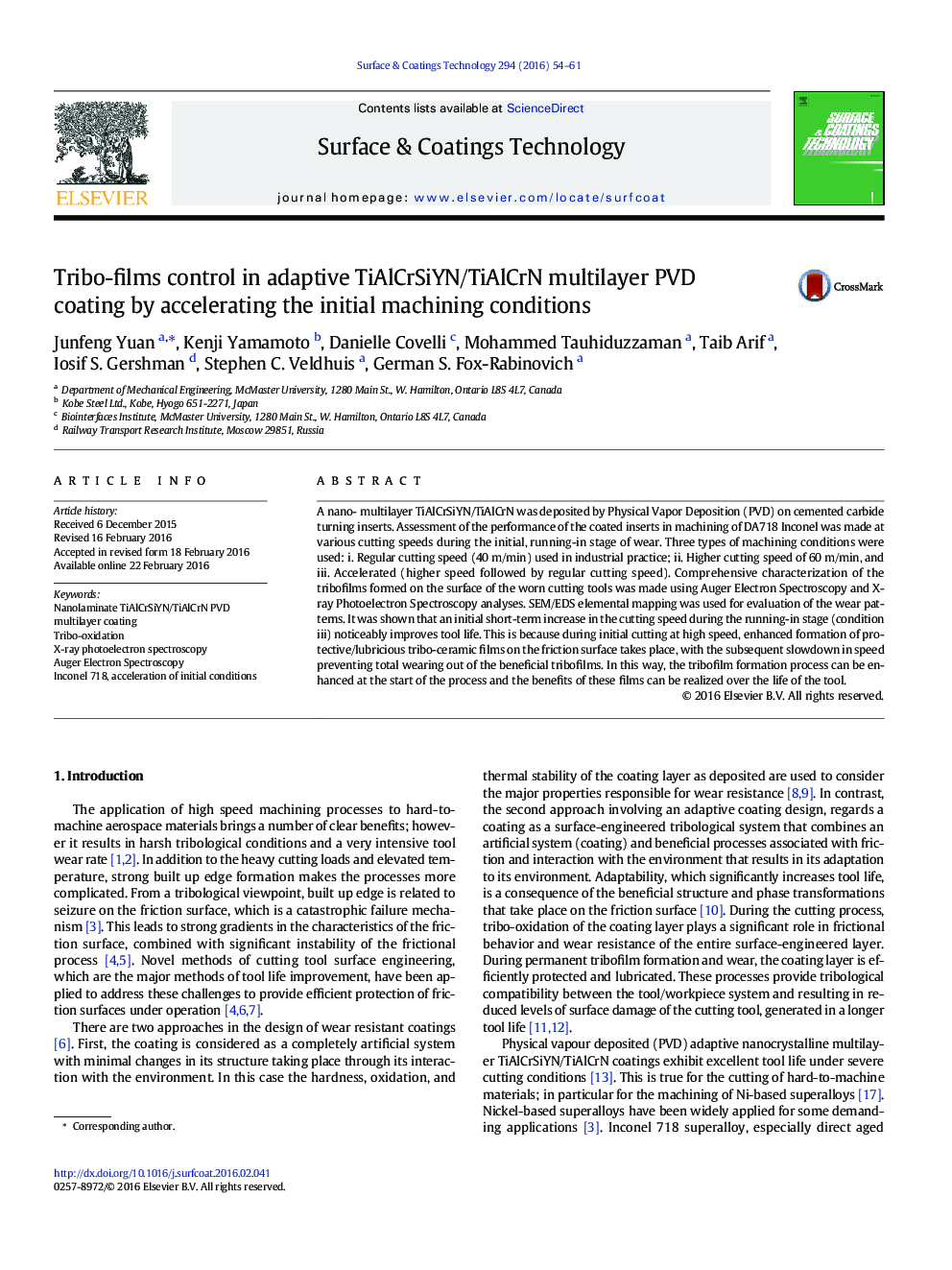| Article ID | Journal | Published Year | Pages | File Type |
|---|---|---|---|---|
| 1656410 | Surface and Coatings Technology | 2016 | 8 Pages |
•Performance of PVD coated inserts in machining of DA718 Inconel were assessed.•Optimization of cutting speed can improve tool life when using an adaptive coating.•Cutting speed strongly affects the generation of tribofilms on a coated tool.•Initial accelerated speeds result in intensive formation of beneficial tribofilms.
A nano- multilayer TiAlCrSiYN/TiAlCrN was deposited by Physical Vapor Deposition (PVD) on cemented carbide turning inserts. Assessment of the performance of the coated inserts in machining of DA718 Inconel was made at various cutting speeds during the initial, running-in stage of wear. Three types of machining conditions were used: i. Regular cutting speed (40 m/min) used in industrial practice; ii. Higher cutting speed of 60 m/min, and iii. Accelerated (higher speed followed by regular cutting speed). Comprehensive characterization of the tribofilms formed on the surface of the worn cutting tools was made using Auger Electron Spectroscopy and X-ray Photoelectron Spectroscopy analyses. SEM/EDS elemental mapping was used for evaluation of the wear patterns. It was shown that an initial short-term increase in the cutting speed during the running-in stage (condition iii) noticeably improves tool life. This is because during initial cutting at high speed, enhanced formation of protective/lubricious tribo-ceramic films on the friction surface takes place, with the subsequent slowdown in speed preventing total wearing out of the beneficial tribofilms. In this way, the tribofilm formation process can be enhanced at the start of the process and the benefits of these films can be realized over the life of the tool.
